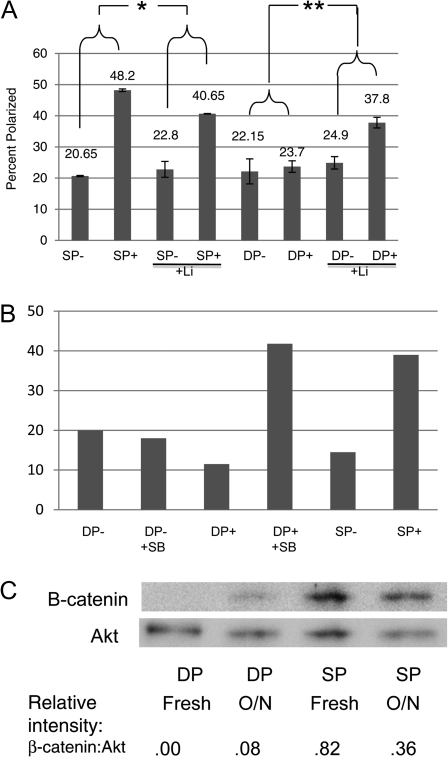Fig. 5.
CD4+CD8+ thymocytes acquire the ability to polarize MTOC in response to TCR stimulation when GSK3 is inhibited. (A) Purified immature CD4+CD8+ thymocytes (DP) and mature T cells (SP) were incubated for 4 h in the presence (+) or absence (−) of plate-bound anti-TCR/CD2/CD28 antibodies and in the presence or absence of 60 mM lithium (Li). The percentage of cells that scored positive for MTOC polarization in three experiments was calculated (as described under Fig. 1). Analysis of variance statistics were applied to the results and the asterixes identify the groups that displayed statistically significant differences (*P < 0.05, **P < 0.01). (B) Purified immature CD4+CD8+ thymocytes (DP) and mature T cells (SP) were incubated for 1 h in the presence (+) or absence (−) of plate-bound anti-TCR/CD2/CD28 antibodies and in the presence or absence of the GSK3 inhibitor, SB415286 (SB). Percent cells that scored positive for MTOC polarization are shown (and are representative of two experiments). (C) CD4+CD8+ thymocytes and mature T cells were lysed immediately after purification or incubated in RPMI/10% FCS at 37°C overnight. Expression of β-catenin (which increases with decreased GSK3β activity) and Akt (loading control) was assessed by western blot. Relative intensities of bands (β-catenin/Akt) are indicated.

